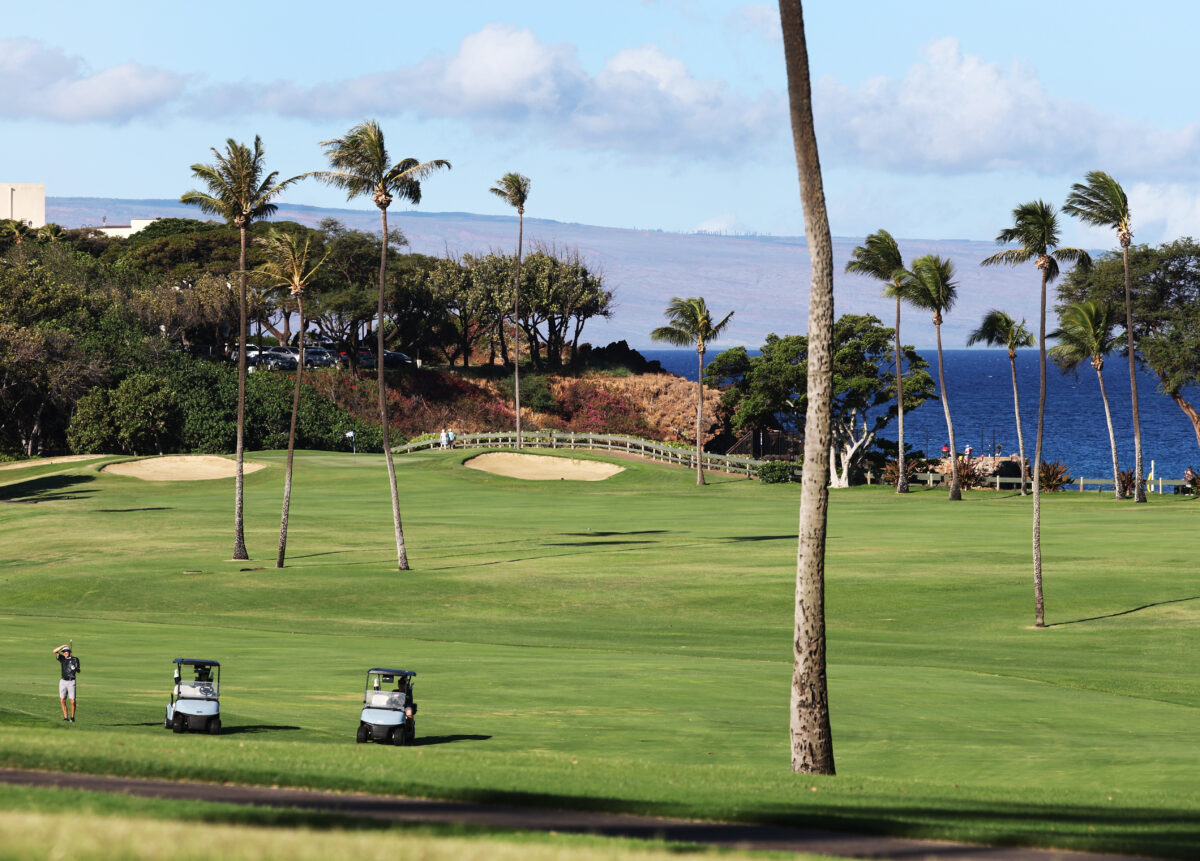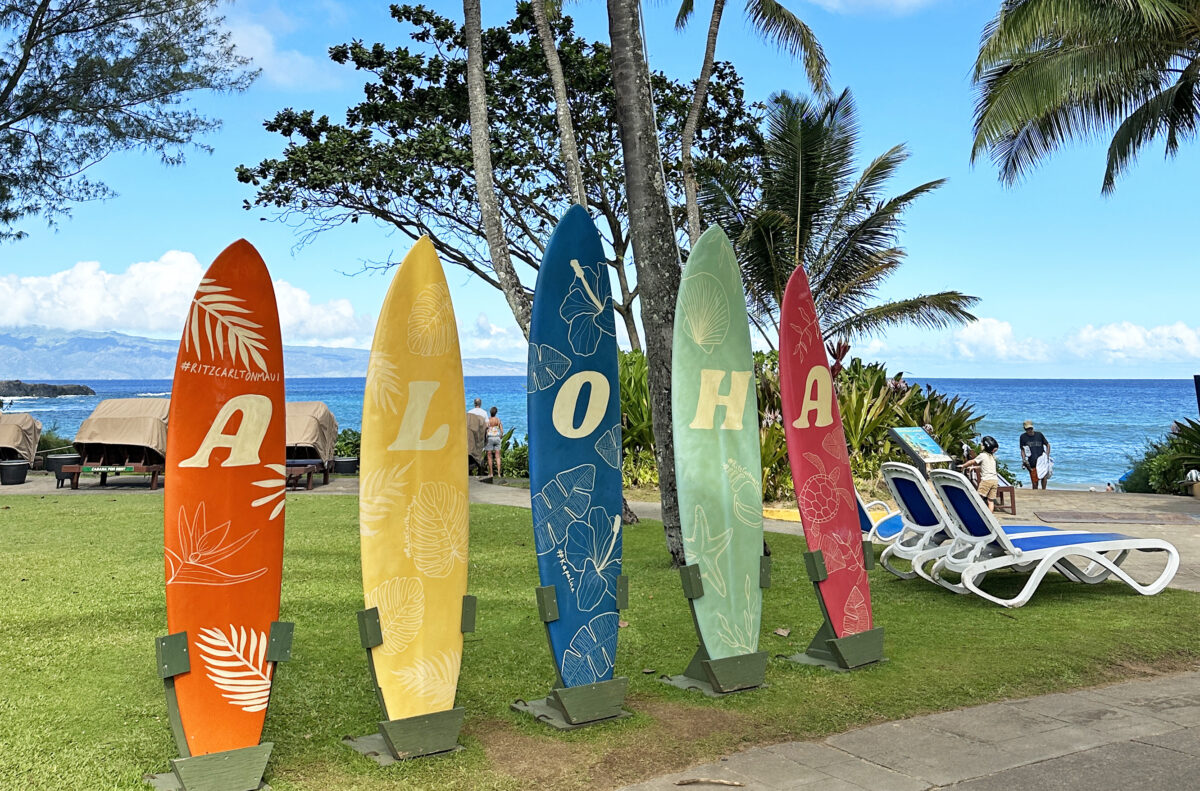Just a whiff of smoke is enough to transport Sue Brimeyer back to that day. To the acrid smell of charred homes as flaming debris rained down and fire raged through Lahaina. And to the earthshaking feeling her very heritage was going up in smoke.
“It was obvious people wouldn’t survive – you can’t outrun a fire like that,” she said, recounting her escape from the deadliest U.S. wildfire in more than a century, which swept through the Hawaiian island of Maui on Aug. 8, 2023.
The 77-year-old grandmother survived a harrowing night in the firestorm, her 10-year-old grandson in tow. But it scarred her in ways that make reliving it particularly painful, even now.
What the fire wrought marks a colossal loss for Hawaii, for Hawaiian families like Brimeyer’s, and the world. The wildfire devastated a people and a way of life already under threat. From rampant overdevelopment to soaring housing costs and from water shortages to the climate change that fueled the fire that day, Maui has long wrestled with a laundry list of crises.
The inferno took 102 lives, the most recent in March when 68-year-old Claudette Heermance succumbed to her injuries, and brought an international spotlight to the island’s struggles. A year later, there are signs of renewal emerging from the rubble, hints of Old Hawaii being reborn. But for Brimeyer, the memories are hard to get past.
She spent the night amid the embers, jumping from house to house to dodge the flames. When she found a safe spot for her grandson to rest, she assessed the remains of her burned-out neighborhood, where three generations of her family lived. Her own home, gone; her daughter’s home – built on land granted to the family in the Great Māhele led by King Kamehameha III before the illegal overthrow of the Hawaiian monarchy – torched.
“There was nothing left of it.”
A scramble to escape the Lahaina inferno
There was smoke in the sky earlier that day from a distant fire on the other side of town, but Brimeyer had assumed it was under control. Then it showed up on her doorstep.
“There was no warning, no sirens or anything like that,” she said. “I saw embers coming down outside the kitchen window. I went outside and I saw that the house across the street was on fire.”
That’s when survival mode kicked in.
A few blocks away, Brimeyer’s daughter, Kehaunani Kaʻauwai, was trapped as thick, black, smoke raced toward her home.
“It was a wall of smoke about six stories high,” she said.
Kaʻauwai needed to evacuate. She needed to find her mom. But she couldn’t drive away. The power was out, and her electric fence wouldn’t open. And she couldn’t call for help – the phone lines were down, too, or spotty at best.
“People were running down the street in panic,” she said.
Among them was a student from the school where she teaches Hawaiian Studies, who stopped and helped force open the gate. She wanted desperately to find her mom, but the smoke was closing in. She was out of time. The traffic to get out of burning Lahaina was “jam-packed” and dangerous.
“Rocks and branches and debris were flying and hitting the cars trying to leave. Trees were in the street,” Kaʻauwai recalled.
https://www.instagram.com/kaanapaligolf/p/C-bTj6zP129/
Not to mention the downed power lines and workers hastily trying to repair them while being pummeled by debris. But Kaʻauwai pushed through and escaped the heart of the fire to safety further down the Maui coastline, sleeping on the beach as Lahaina burned in the distance.
‘In survival mode’ as Lahaina burned
Brimeyer, unable to contact her daughter, quickly put a shirt on her grandson Kapono, who is nonverbal, and guided him from house to house, seeking shelter from the ash and smoke as fire consumed home after home around them.
When the winds died down, slowing the fire’s spread, Brimeyer found a pocket of safety on the lawn outside the Lahaina Hongwanji Mission. As Kapono rested, she looked across the street for her house.
Except it wasn’t there.
“Everything was gone. All the houses were gone. All the churches were gone. As far as I could see, it was nothing. It was just gone,” Brimeyer said. “Saw most of my neighbors’ homes burnt down and a body on the ground next to my neighbor’s walkway.”

She didn’t have time to mourn amid the ruins.
“It was kind of numbing. I couldn’t react to it. You just couldn’t react. You couldn’t have emotions. You were just in survival mode.”
It wasn’t until the next morning that Brimeyer saw and waved down a county worker passing by in a truck. He was stunned to see the grandmother and grandson in the rubble. She soon reunited with her daughter outside the burn zone.
“She was crying and I was crying,” Brimeyer said. “She thought we had gone in the fire – she thought we were gone.”
Kaʻauwai couldn’t imagine enduring the night in the center of the inferno.
“I just thought she was amazing how she found pockets of safety for her and Kapono – she just pushed through to find safety,” Kaʻauwai said. “I am just so glad she didn’t just say OK I’m done. It was unbelievable.”
Generations of Hawaiian history up in flames
The Lahaina inferno destroyed or damaged more than 2,200 structures and caused an estimated $6 billion in damage, closing many of the area’s golf courses.
Kapalua Golf’s Bay Course re-opened on Sept. 20, and its Plantation Course was back operating by October. Both golf courses had been closed since the Maui wildfires on Aug. 8. Located in West Maui, the golf courses and facilities at Kapalua Golf were spared from the fires.
Many historic Native Hawaiian sites and artifacts were destroyed. Among them, Waiola Church, the final resting place of Keōpuōlani, the highest-ranking wife of King Kamehameha the Great who united the Hawaiian Islands into one kingdom. The church was known as the site of the start of Christianity in Hawaii in the early 1800s.
Kaʻauwai said generations of homes were lost in an instant.
“My house went from a beautiful one-story family home to five inches of ash,” she said. “You can’t fathom the thought that everything is gone.”
The hardest possessions for Kaʻauwai to lose were deeply rooted in her Native Hawaiian culture.
A collection of rare Hawaiian books about Old Hawaii that belonged to her grandmother was lost in the flames. Hula implements she had since she was a child were gone. Her cherished poi board was burned to ashes.
Brimeyer was able to salvage a Hawaiian bracelet from the ashes of her home, a wedding gift from her late husband Gary whom she credits for her survival that day.
Kaʻauwai’s son now patrols the burn zone every day, working with Truth Excavation to clear debris and restore the land he grew up on.

Like his mother and grandmother, Keoni Hassett lost his home in the fire. One of more than 3,000 displaced residents, he’s been frustrated by a lack of government support and tedious requirements to get financial aid and housing. A recent survey published by the Hawaii State Rural Health Association found more than two-thirds of the survivors have struggled to buy groceries and housing stability remains an issue on the island.
“There’s residents that are camping on the beach or living in their cars,” Hassett said.
But he’s optimistic about the island’s future as reconstruction gets underway and he sees life re-emerge. Charred plants are sprouting new growth, and signs are appearing of the wetlands endemic to the area before it was heavily developed.
“As we’re pulling up concrete, all these springs with water – fresh water – are bubbling up that had foundations poured right on top of,” Hassett said. “We’re going to have springs in Lahaina again like the 1800s.”
Hassett is grateful his grandmother survived the harrowing ordeal.
“The fire went right over them and they didn’t get burned,” Hassett said. “It’s baffling. She’s got someone watching over her.”
Brimeyer purchased a home in Kihei after the fires but aims to soon return to Lahaina. Plans to rebuild her home are already in the works.
“Lahaina means a lot to us – my whole family,” she said. “I love Lahaina. It will always be my home.”
Ashley Lewis is a deputy managing editor at USA TODAY and is a Native Hawaiian born and raised on the island of Maui. She has known Brimeyer’s family since childhood.

